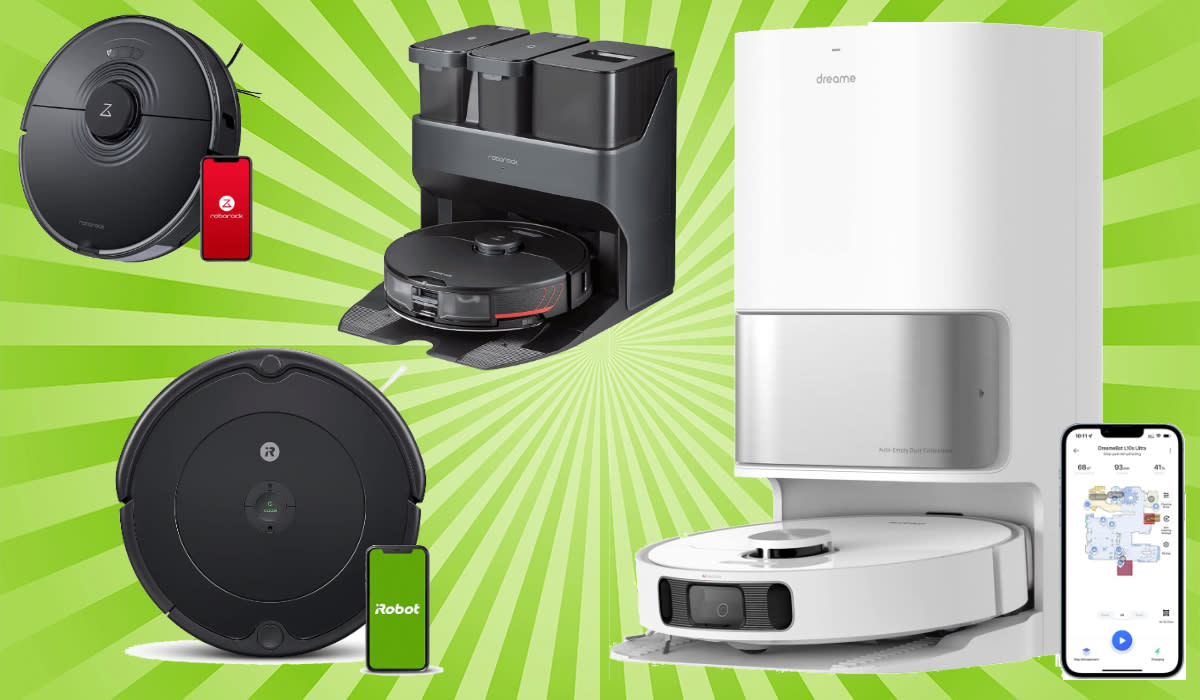The best robot vacuum to keep your house clean in 2023
You've heard the old expression, "It's a dirty job, but somebody has to do it." If the job in question is vacuuming or mopping, guess what: Nobody has to do it! Not if you put a robot to work on those floor chores. Robot vacuums have improved considerably in recent years, offering more suction, smarter navigation and even mopping features. Some can empty their own dustbins, too. (It's a short step between that and a complete robot uprising, but I'm willing to risk it if it means I can stay on the couch longer.) So how do you choose the right robo-sucker? These things range in price from around $200 all the way to a jaw-dropping $1,400. Will a cheap one get the job done? Are the fancier features worth the extra money? Here's the rundown on the best robot vacuums you can buy right now.
First things first: If you tried one of these years ago and came away disappointed, I don't blame you. Early smart vacs were, well, super-dumb, able to navigate floors only by bumping into anything and everything. Getting caught on cords and curtains was the norm. They lacked any smart-home connectivity to speak of, and they barely had enough power to suck up a Cheerio.
Newer models rely on LiDAR-powered guidance systems and app-based mapping. They can respond to Alexa and Google voice commands ("Alexa, tell the robot to mop the kitchen floor!"). And they're much smarter, in some cases able to detect extra-dirty areas in specific rooms and focus more attention on them. A couple models can even spot pet-related oopsies and steer clear.
What remains, then, is to decide which features matter most and how much you're willing to spend. Even at the lower end of the price spectrum, you'll find surprisingly capable vacuums. Best of all, they're more cooperative than the surly teenager you can't get to pick up a shirt, let alone clean the rug.

What features are important in a robot vacuum?
Good news: Even inexpensive vacs do a pretty good job sweeping floors, and many of them now offer what was previously a premium feature: a self-emptying bin, a nice time-saver. Without it, you need to manually dump the debris after every cleaning or two. With it, you can often go a month or more before emptying.
Don't focus too heavily on the suction rating (expressed as "Pa," short for "Pascals"). Although a higher number translates to greater power, it doesn't necessarily mean "better at cleaning," as there are other variables at work as well. iRobot, makers of the famed Roomba robots, doesn't even specify a Pa number for its products. That said, I'd look for a minimum of 2,000Pa, which should be enough to suck up Cheerios (arguably the most important measure of vacuum acumen).
What else should you look for? These are some key features to consider when evaluating robo-vacs:
App-based mapping and scheduling: Once upon a time, you had to deploy special sensors or even strips of magnetic tape if you wanted to keep your vac out of certain spaces. Modern models will scan and map out your entire space, label individual rooms and allow you to create virtual "no-go" zones. (For example, my desk chair sits on a plastic mat that's curled up at the edges, so I've established a small zone to keep the vac away from it.) All this happens in an app, which also allows for scheduling, spot-cleaning, smart-assistant integration and much more.
Self-cleaning mop dock: I already mentioned the self-emptying dustbin, which is great, but if you're interested in a vac that can mop as well, consider spending extra on a self-cleaning mop dock. Without this, you'll have to manually add water and remove/clean the mop pad on a regular basis — not fun.
Auto-rising mop pad: Speaking of mop pads, you don't want a wet one dragging across the carpet, do you? Look for a vac with an auto-rising pad, one that will lift up when sensors detect carpet.
Smart obstacle-avoidance: Got pets? Cords? Curtains? Kids? Newer, smarter vacs can avoid toys, socks, pet accidents and other items that would trip up other models. Take note that this feature typically relies on a camera, one that may be able to stream a live feed to your phone. It's also a potential security risk, something to consider if you think hackers are interested in what's on your floor.
Battery life: Ideally, any robot vacuum should be able to sweep your entire floor without needing to recharge along the way. But this depends on the size of your home (or, at least, the size of the selected cleaning area), the size of the included battery and the overall power of the vac. (The higher the Pa, the higher the battery demand.) How much runtime is required to completely clean your house? Hard to say, but take note that most robot vacs have a rated runtime of anywhere from 90-210 minutes. If you live in apartment, a shorter time may be fine. If it's a big place, consider a longer-lasting battery.
How we chose the best robot vacuums of 2023
In creating this list of the best robot vacuums, I focused on a number of criteria: personal experience (I tested many of them), user ratings, features and price. I'll note that it's hard to go wrong with any model from iRobot or Roborock, and I've been increasingly impressed with products from Dreametech as well.
Here are my picks for the best robot vacuums of 2023, starting with the most affordable.


